-
Posts
5,404 -
Joined
-
Last visited
-
Days Won
15
Posts posted by LongLeftFlank
-
-
Fires in vegetation take quite a while -- several minutes or more -- to get going once lit, especially in the unseasonably damp conditions that characterized Normandy in June - July '44. So you aren't going to get a lethal wildfire or even a good smokescreen for some time. Probably explains why it wasn't used as a RL battlefield tactic much.
Buildings are easier to torch in all weather, but the resulting fire isn't necessarily going to spread readily beyond immediately adjacent structures.
-
Wow, that would make issuing Target orders to that squad.... interesting
-
My focus was 81mm, but I have definitely seen about 30 rounds of 60mm direct fire demolish structures and hedgerows and decimate wood bunker occupants. I can live with the first and last --I assume they used some of the demo rounds but the lethality against bunkers is just too reliable. I think Harry is right about the firing slit being an Achilles heel.
-
Yes, not to ignore a serious bug or anything, but my instant reaction on reading the OP is if you're depending on that 2 man fragment of a depleted unit to accomplish any combat objective, you're really scraping the bottom of the barrel! (We've all been there!)

-
I have no problem with the accuracy or ROF of CMBN mortar rounds, or with their lethality against unentrenched infantry, or direct hits on infantry in open entrenchments; indeed, all that seems about right. Based on my reading, once the mortars ranged in, advancing infantry tended to go to ground pronto and stay there, for good reason. All those tiny fragments flying around were simply lethal.
However, it is my opinion that the concussive / destructive effects of ordinary frag rounds (not the special demo rounds, whose very existence affirms what I'm saying) against terrain, buildings and wooden bunkers are significantly overmodelled. Same goes for lethality of non-direct hits against entrenched infantry.
Mortar frag rounds and fuzes are designed to maximize AP fragmentation by impacting on (or above) the surface, not to plow into the ground before exploding as do conventional shells. The blast force is far from zero of course; for example, much of the lethality of treebursts is the bomb shredding impacted tree limbs into splinters. And mortar rounds could certainly bury themselves in wet ground (as depicted in that BoB clip), creating an impressive vertical shower of earth but muffling most of the lethal fragmentation effect outside the immediate impact area.
On the other hand, a buddy of mine used to pick up the tailfins of 81mm training rounds from the center of the impact spot, which he said in rocky desert left far more of a scorch mark than a crater.
-
...or we can hope for the blast effects of mortar rounds (frag, not demo) to be significantly reduced.
I should really not be able to breach hedgerows with 60mm....
-
If you're going to add something, I'd much rather see a "drag Buddy to cover by his webbing straps" animation. But the status quo doesn't bother me personally... It abstracts other risky activity.
-
Yes, I know what Steve's talking about -- I was trying to build a narrow entryway for the Haveli on my Ramadi map (basically using a narrow wall through a building whose front and back walls have been deleted and it totally messed up the pathfinding of the units passing through it. But the straight wall segments seem to be OK.
-
So do they eventually ally with some equally unsavoury Yanks, including a corrupt supply sergeant who looks like Don Rickles? And there's gotta be Tiger tanks involved, baby! And a sexy Tommy gun toting French hooker looking for payback for the swastika shaved into her head (time for Charles to share that "special" wireframe model he worked up one night -- sure he's a disembodied brain in a jar but he's human like everyone else)
I eagerly await the comic book spinoff....
-
Playing around a little with the buildings editor. Here is a nice sturdy chateau, with 3 medium modular rectangles in line plus 2 cathedral types on the "wings"
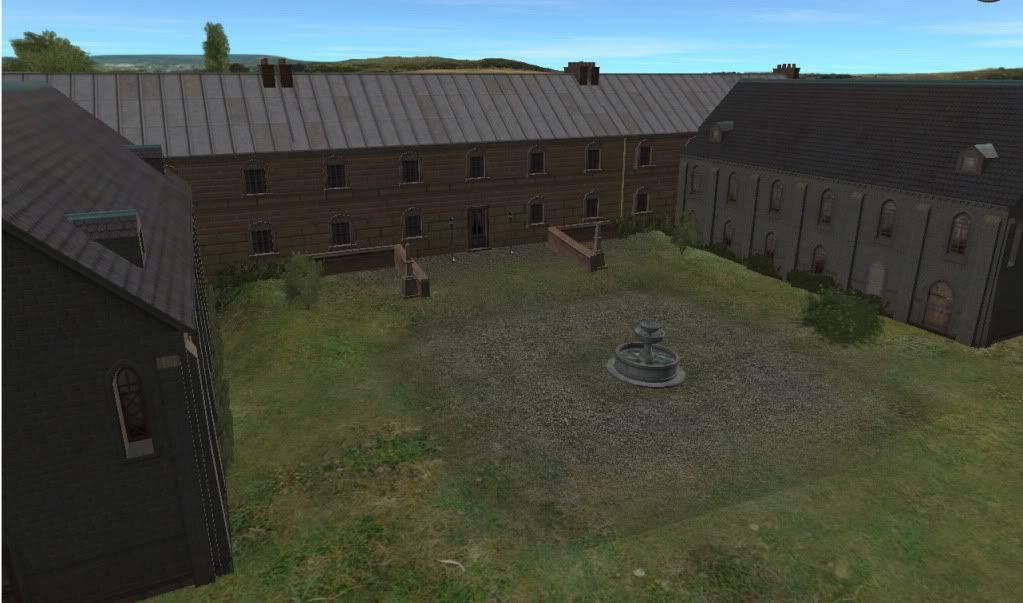
Here's the front in a little more detail. I raised the main building 1 meter to create the paved "stairway" in front, with brick walls and obelisks for a decorative balustrade. There's also a circular gravel turnaround encircling the fountain. Note also the use of hedges and other plantings.
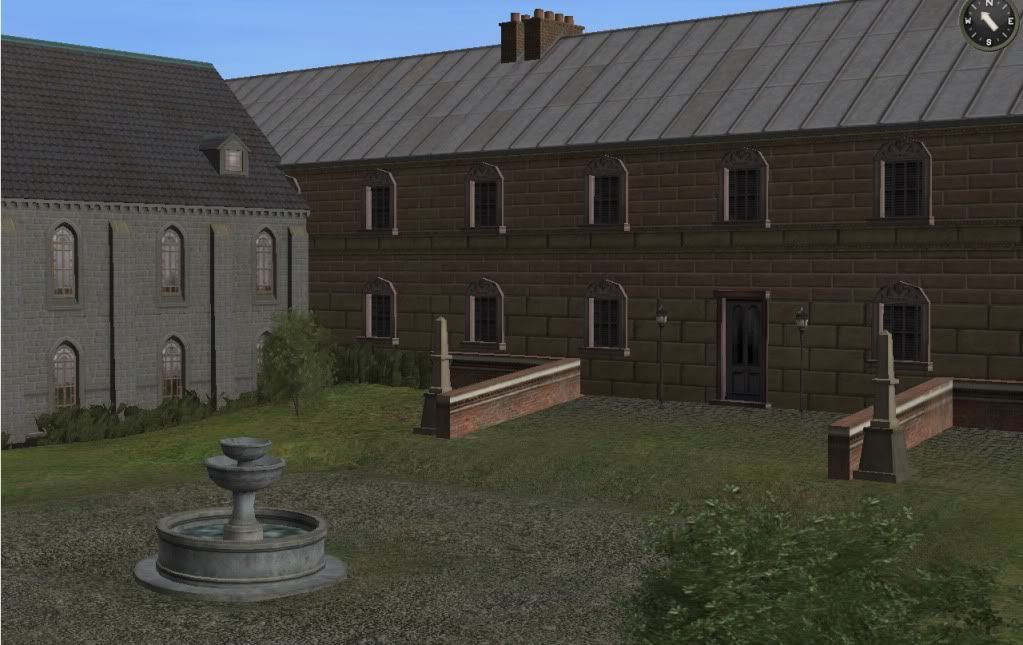
And as a separate project, I used 2 medium square buildings (these are diag but you can do the same with the 90deg ones), dividing each open-fronted ground level with a brick wall to create a stables with 4 "bays". This could also be a dairy barn.
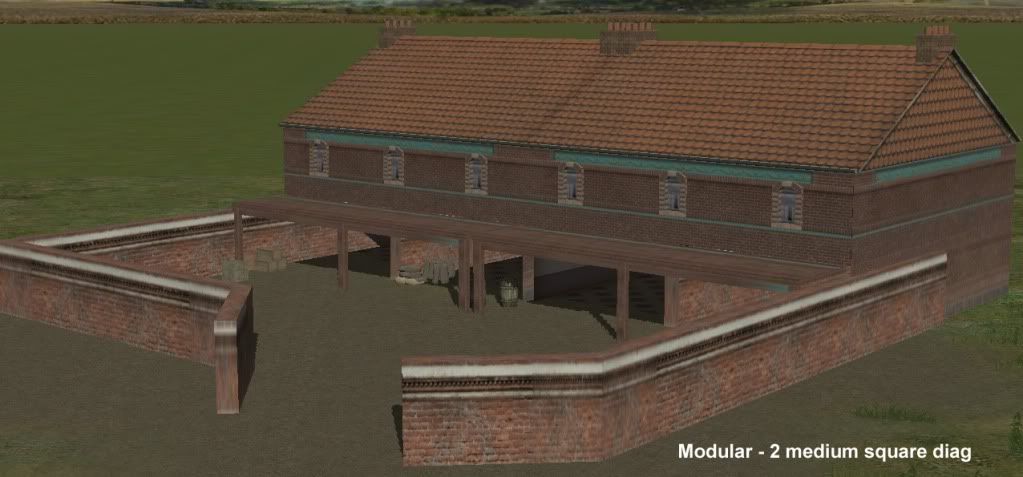
The irregular shape of the gate was needed to create something big enough for vehicles but not a full 8m square wide. The man-sized opening was too small and looked silly.
-
I love it!
-
No disrespect intended to anyone here. And after 1860 or so the homebuilding and fencing aesthetic would change since the wider availability of barbed wire, sawmills (using imported wood and rail haulage) quick growing "screening trees" (eg poplars) would become economically competitive with building labour-intensive hedgerows, and protection against Vikings would be less of a concern. So fast growing towns would replace high stone walls with decorative hedges and wooden sheds, carriage houses and garages would replace older stone or half-timber oubuildings.
But the farther you get into the countryside, off the main roads, the more you see buildings and fields built and enclosed on 1000 year old patterns.... which is to say, stout-walled with few windows, huddled behind walls and embankments which generally limit LOS both in and out. A wealthier farmer (and Normandy is not overly wealthy as French regions go due to the harsher winters) might add a wooden barn or cottages but the basic layout wouldn't change much.
Tractors changed everything, but did not enter widespread use in Normandy until after Liberation. Looking at modern photos can be deceptive.
Construction here in North America, in contrast, was largely greenfield and took place in what to Europeans would have been a veritable ocean of cheap local timber. So even our 18th century houses are almost entirely wood, as were the fences.
-
Since the texture is only 2d, it doesn't seem like it would look good. The guy who jist posted all those excellent vehicle skins tried to put twigs on a jeep hood and it looked silly. I think Schultzy is on the right track with using hedges and fences, or segments thereof. Just remember very few rural buildings in France don't have some kind of enclosure surrounding them -- walls, hedges or hedgerows as well as outbuildings. This isn't America. Too many of the CMBN maps look like Vermont. That matters tactically -- a lot -- for both protection and field-of-fire reasons.
Also, too many doodads will make a map really slow. CMBN isn't as tolerant as CMSF due to the foliage.
-
You may notice that for some reason the "medium rectangle" (2 squares) has a single chimney (as well as a metal roof)
-
Thanks Ian. Anybody who wants to upload screenies of particularly nice or authentic buildings they've done into this thread is welcome to do it. I'll slap a few up from La Meauffe in a bit.
Also, I noticed CMBN doesn't let you preplace a rubbled building tile like CMSF did. This is a miss IMHO, since battles often take place in places that have already seen heavy combat and bombardment.
-
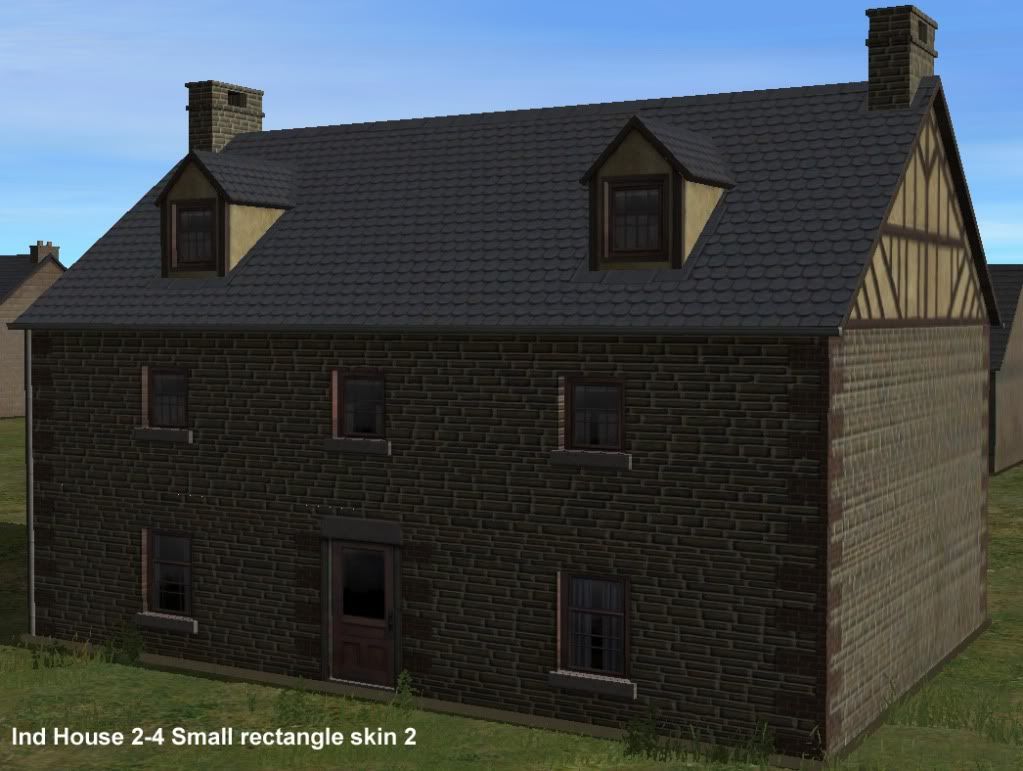

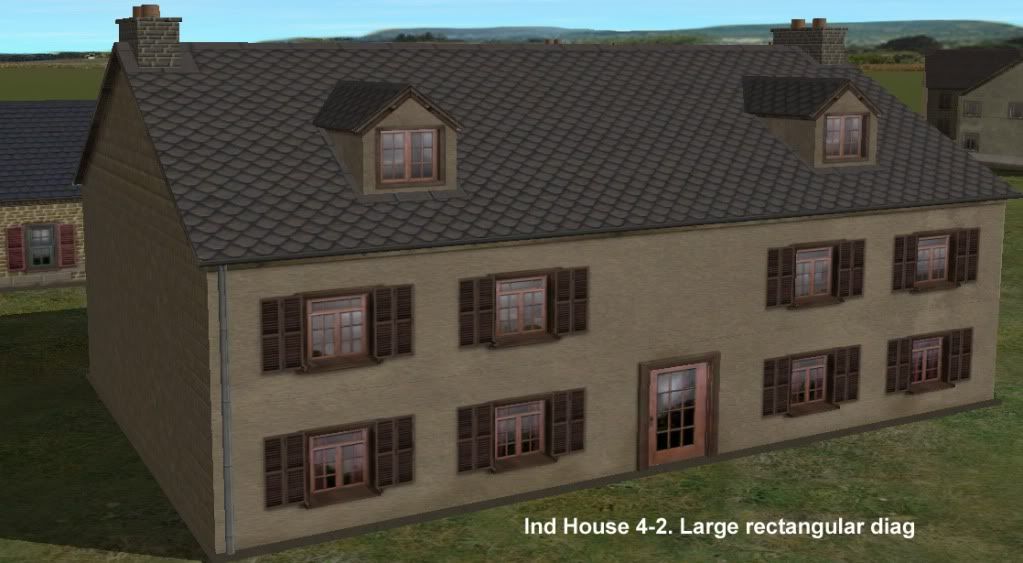

OK, that's everything in the gallery....
-
The stone chateaus. It's too bad these don't have the artillery resistance of the cathedral buildings. If you need that though (I do), you can use the 3 story Cathedral tile
These fancier buildings (dressed stonework, big French windows) would rarely be seen outside towns (except for chateaus or convents).
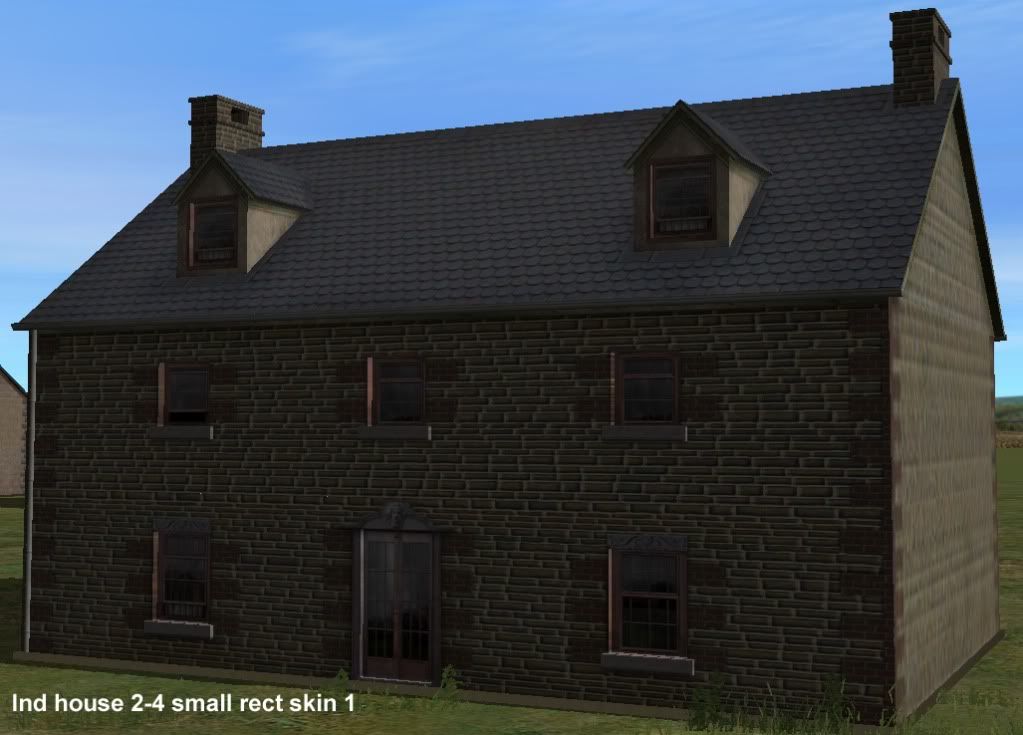
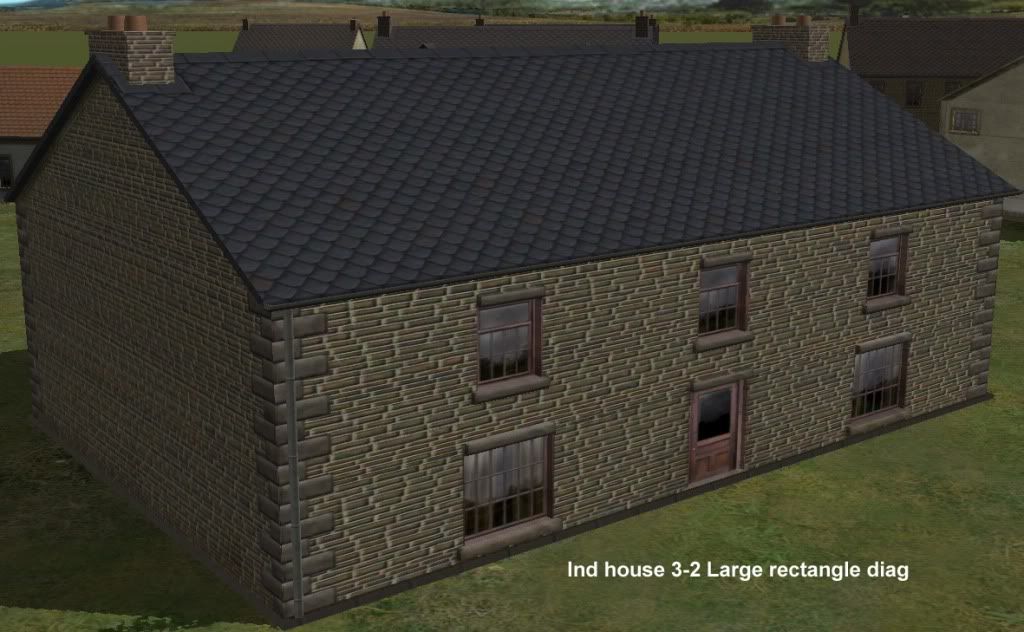
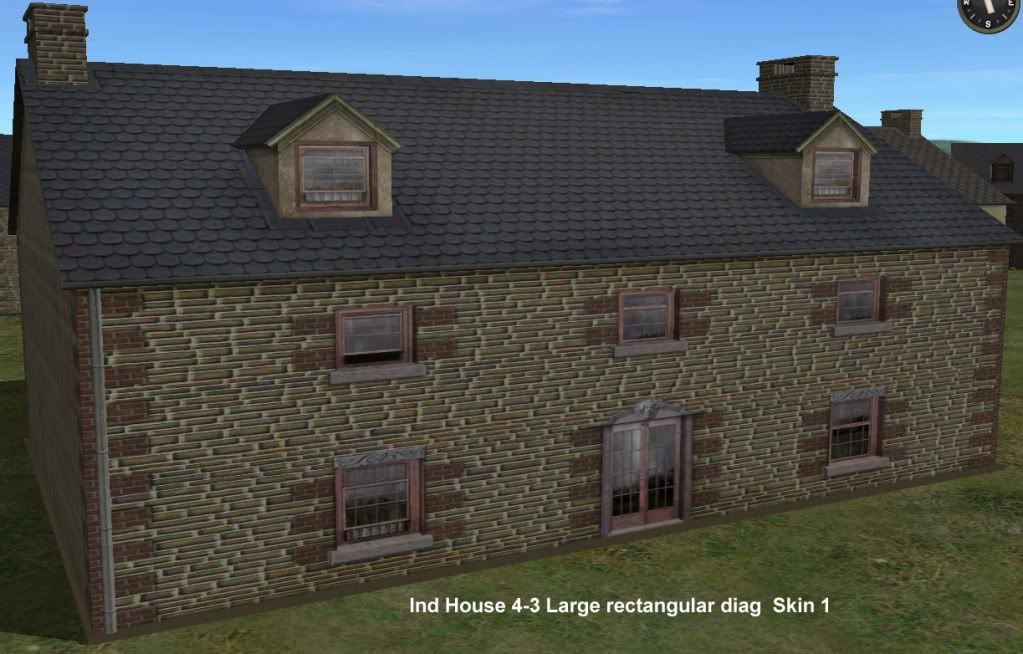
(The one below is mislabeled -- it's row 2 column 3 in Independent Houses)


-
These look a little more rural and weatherbeaten -- enough to be convincing roadside inns or hotels....
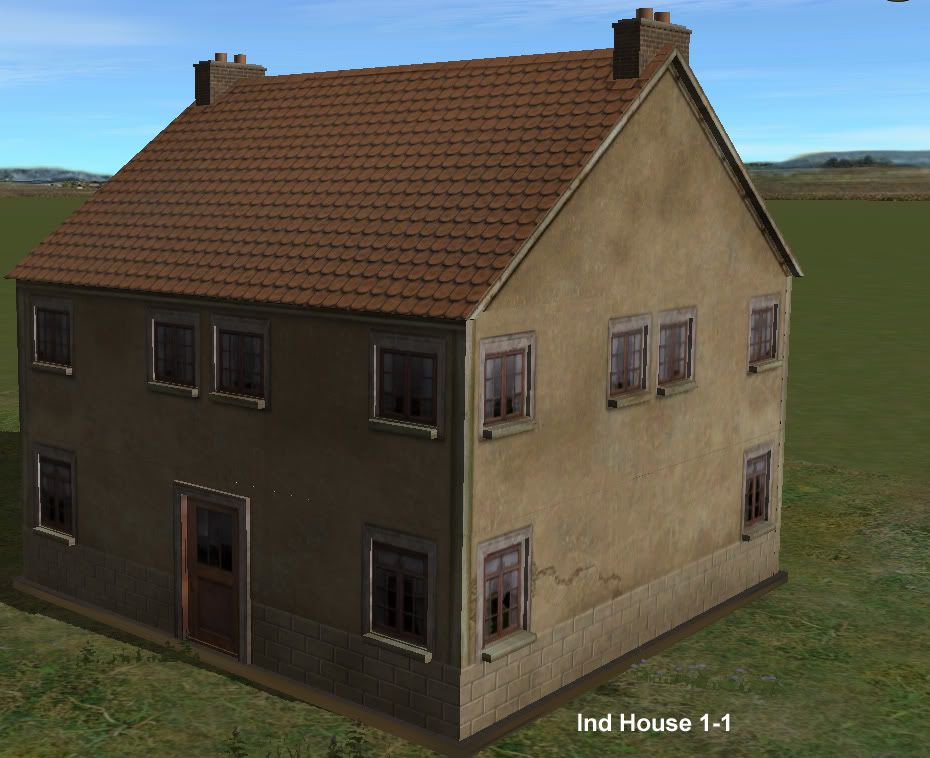
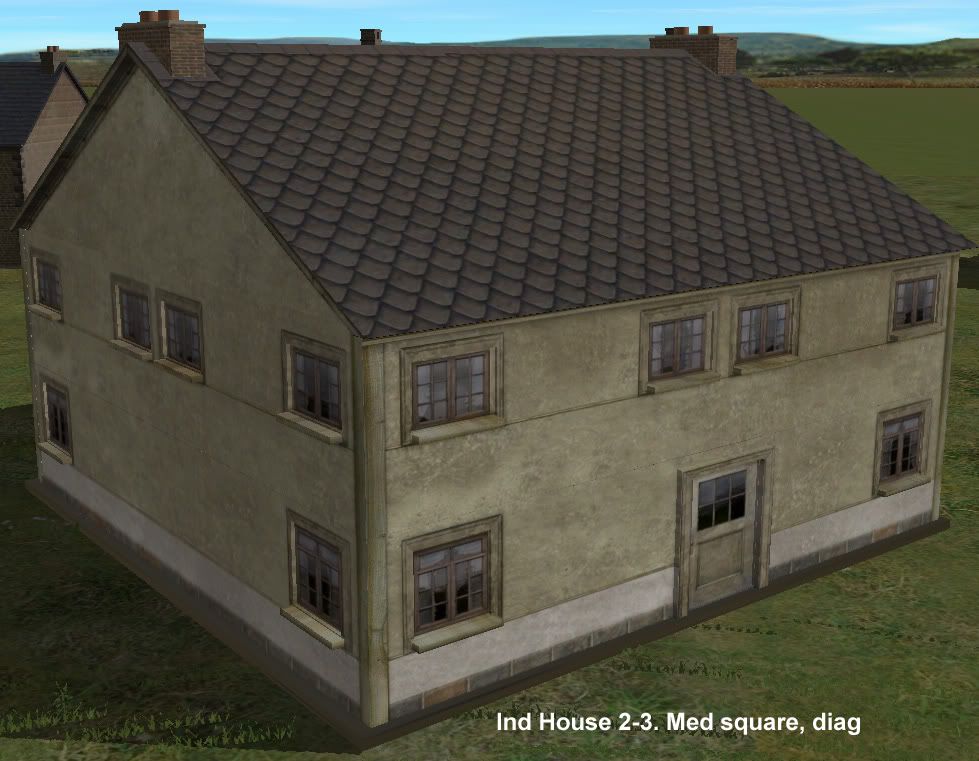
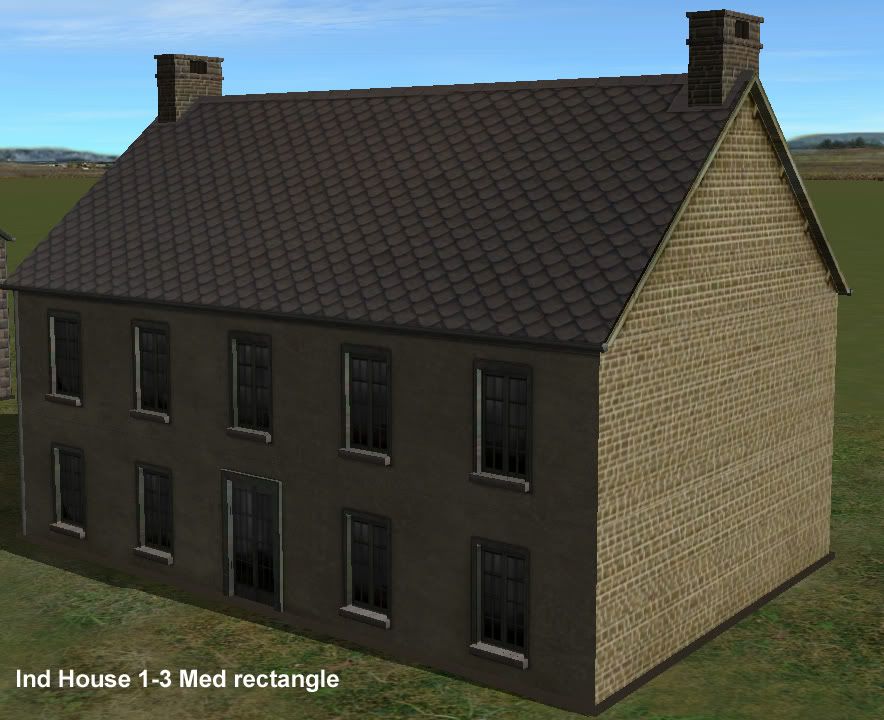
-
Like the Hotel California, you can never really leave the Cafe Grammont....

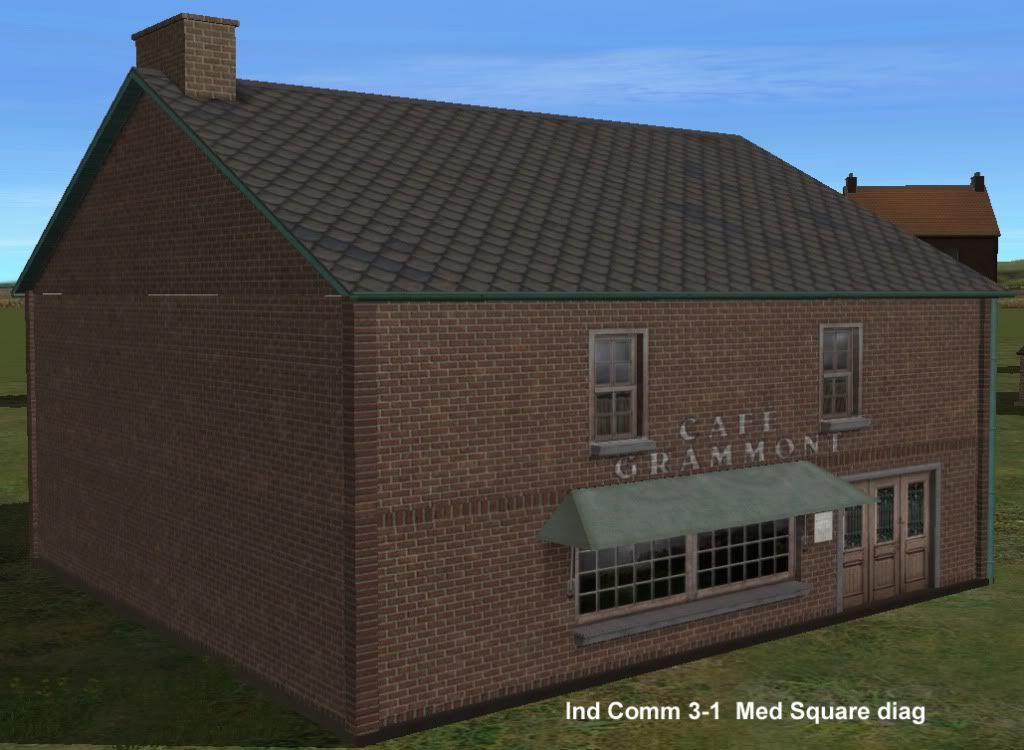

A rural tavern using the modular building type and a balcony.
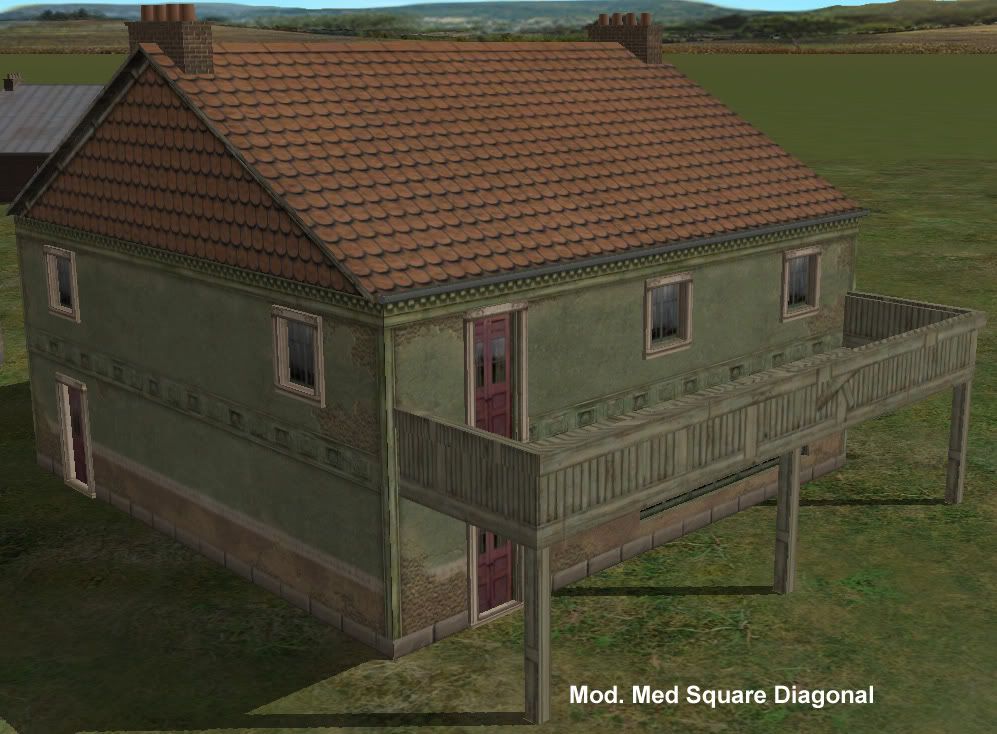
-
When laying out bigger towns, you can also turn the various shop buildings backward to create additional apartment frontages.
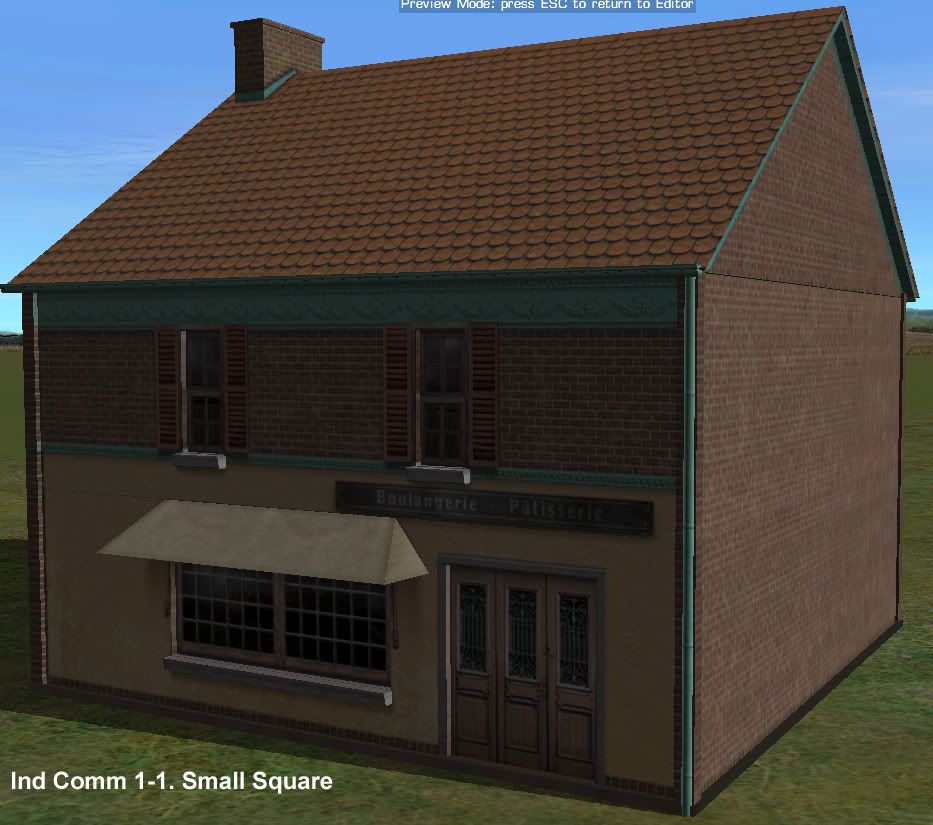
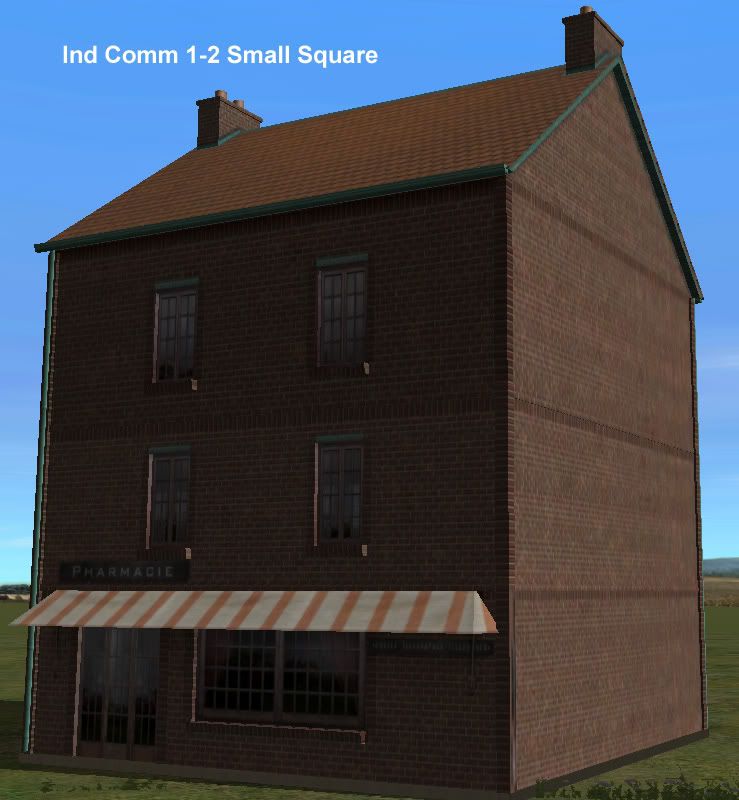
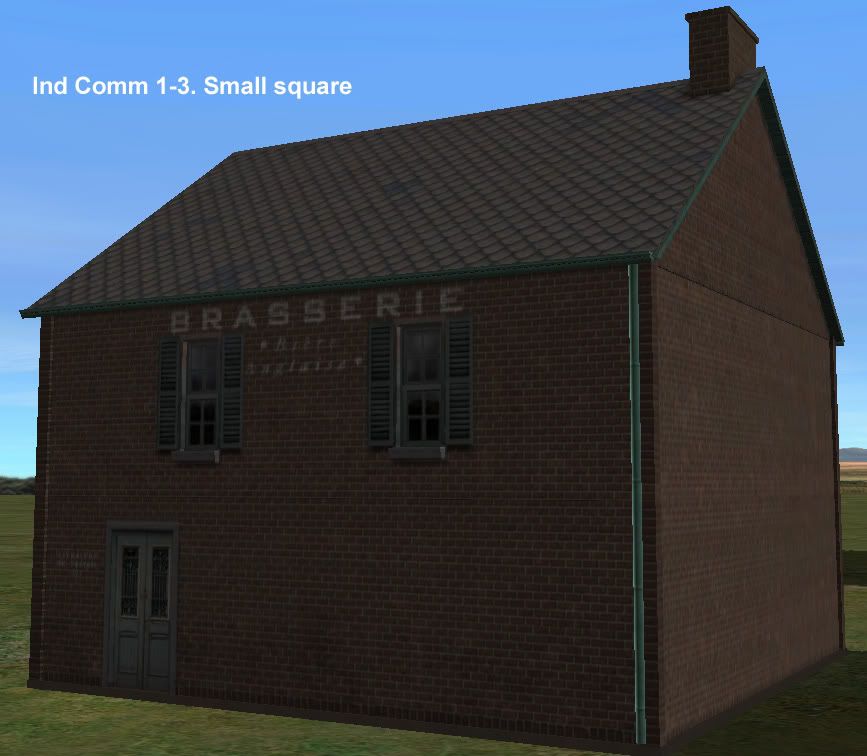
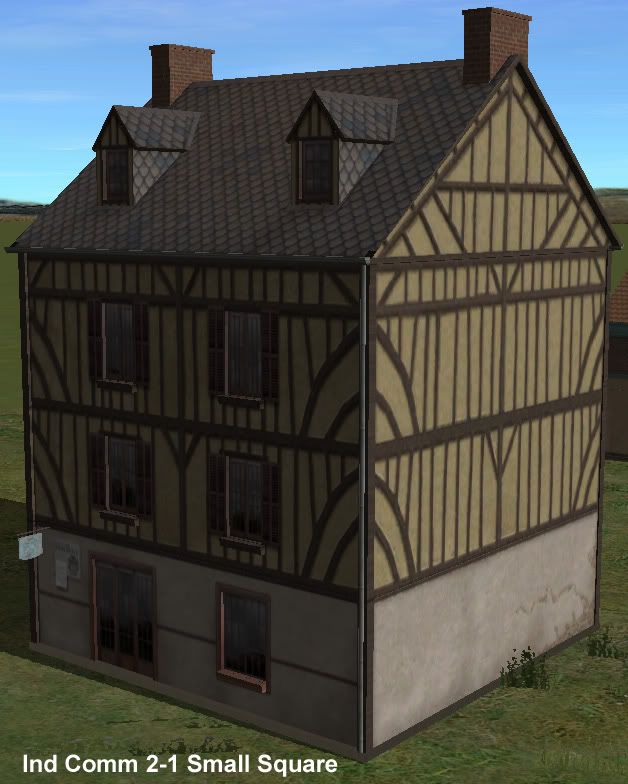
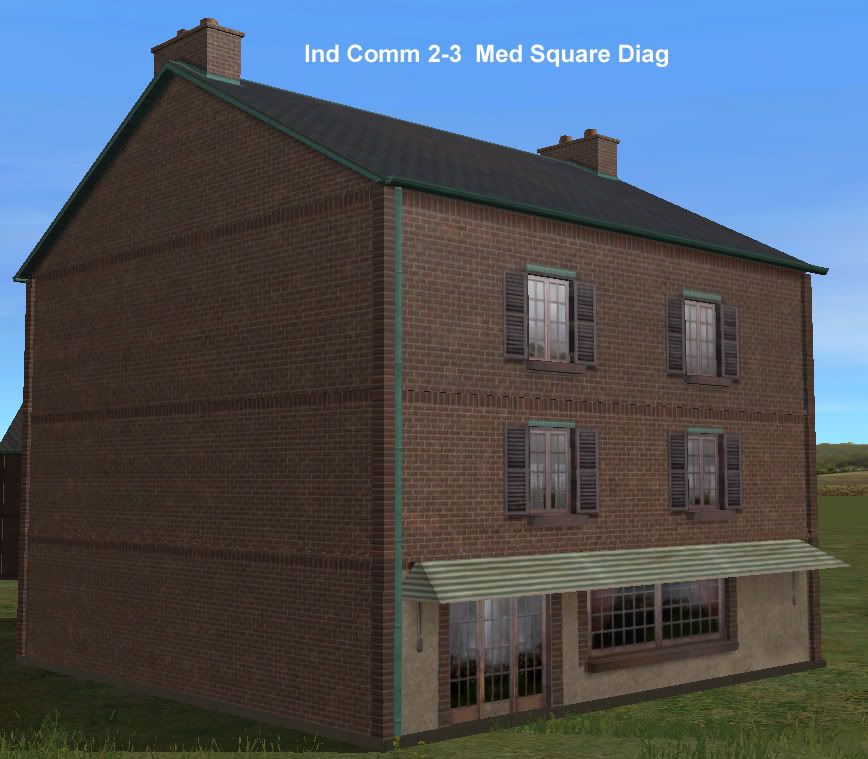
-
Just as in Great Britain and New England, the Industrial Revolution (inasmuch as it came to Normandy at all outside the larger towns) was built mainly of ugly red brick. The fancier dressed stone textures available in the game should generally be used only for either public buildings or the (mainly urban) homes of the well-to-do.
The number of windows is going to depend on the use of the structure. Warehouses have fewer, workshops have more (need light to work).

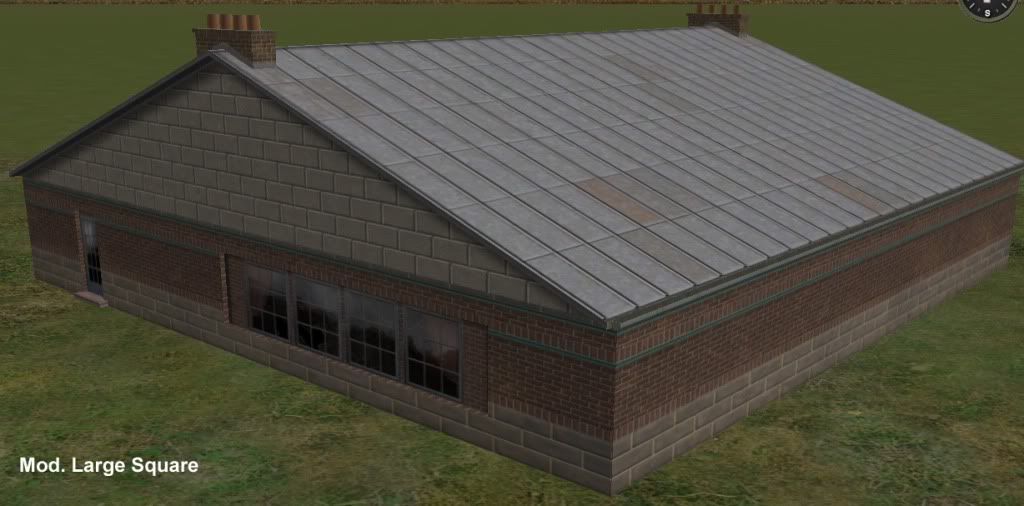
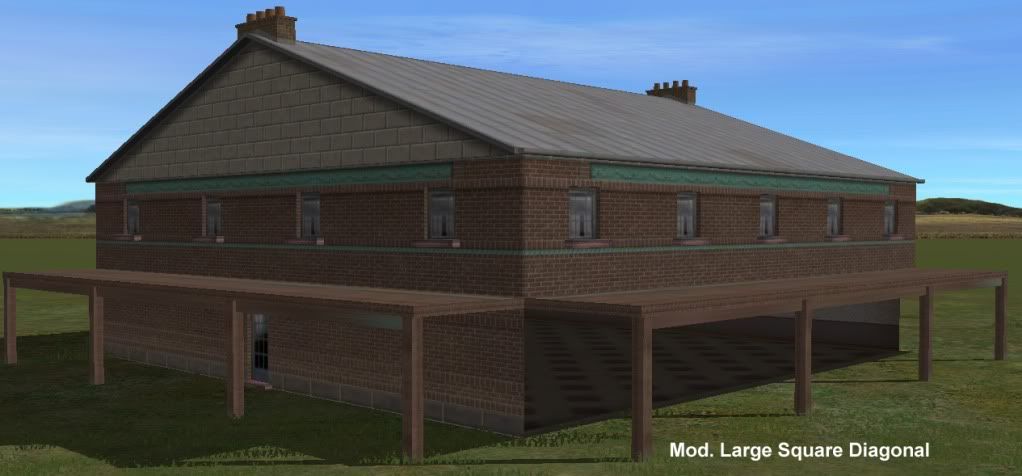


-
-
These can also be outbuildings for industrial or agroindustrial (e.g. dairies) establishments.
An open-fronted stable or storage area, Don't worry; your troops will not go out on the balcony if there's no door!
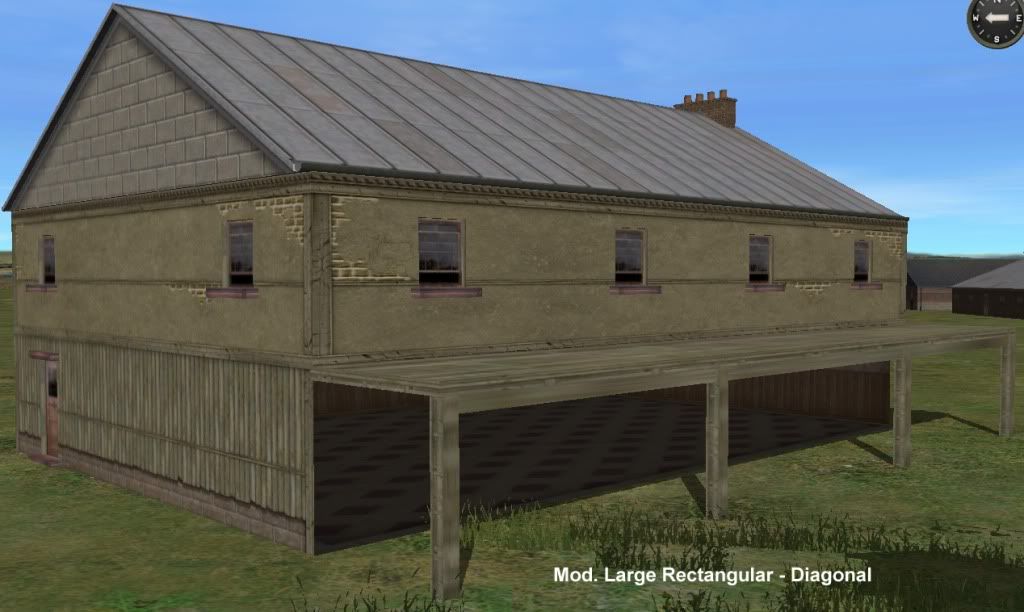


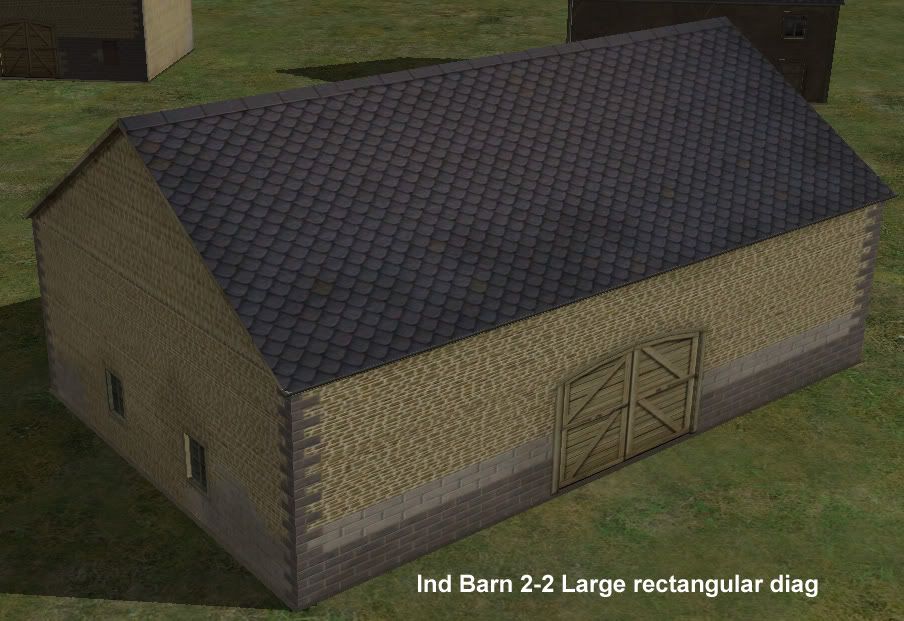

-
These less ornate houses can also double as village and town houses or newer (19th-20th century) farmhouses or inns/general stores found along main roads (typically enclosed by a hedge or a low wall).
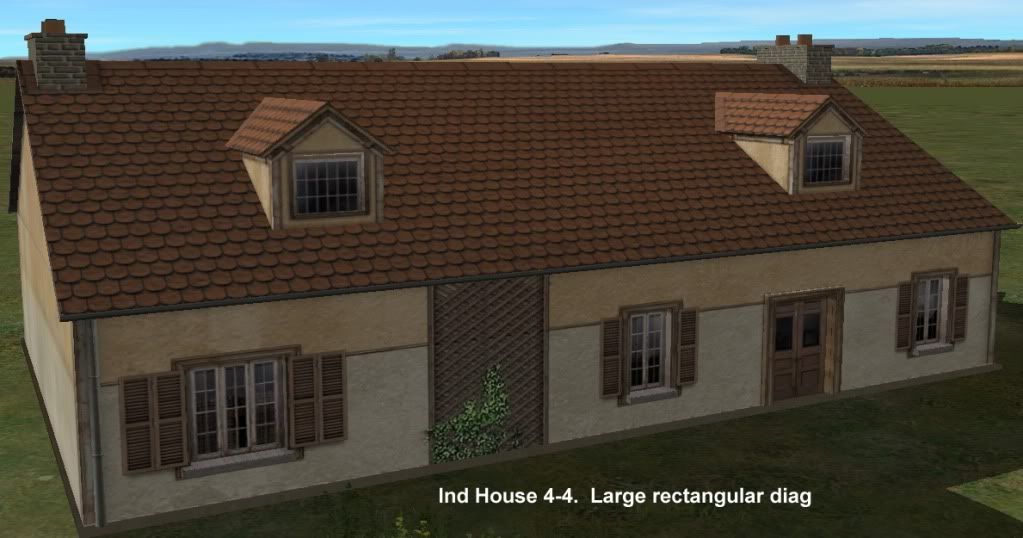
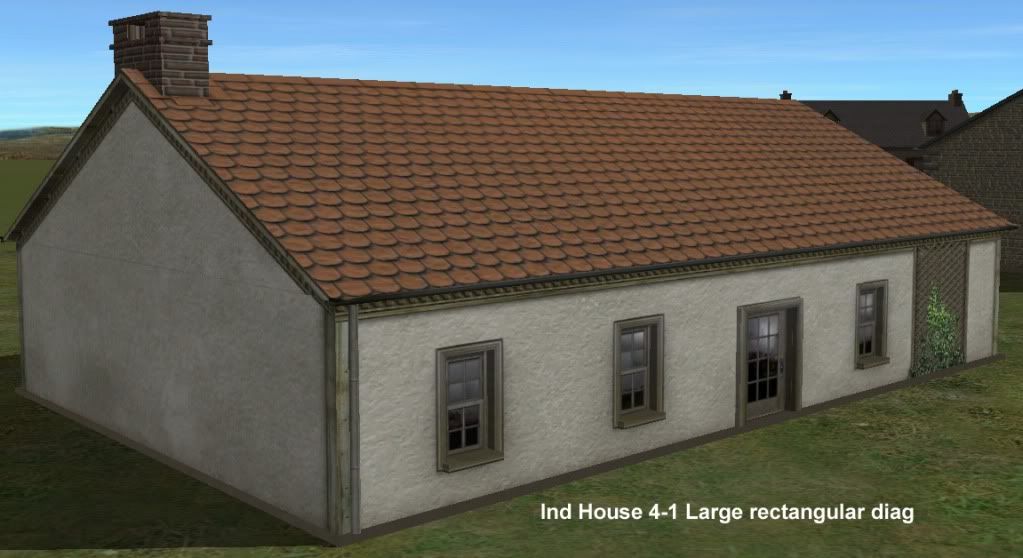

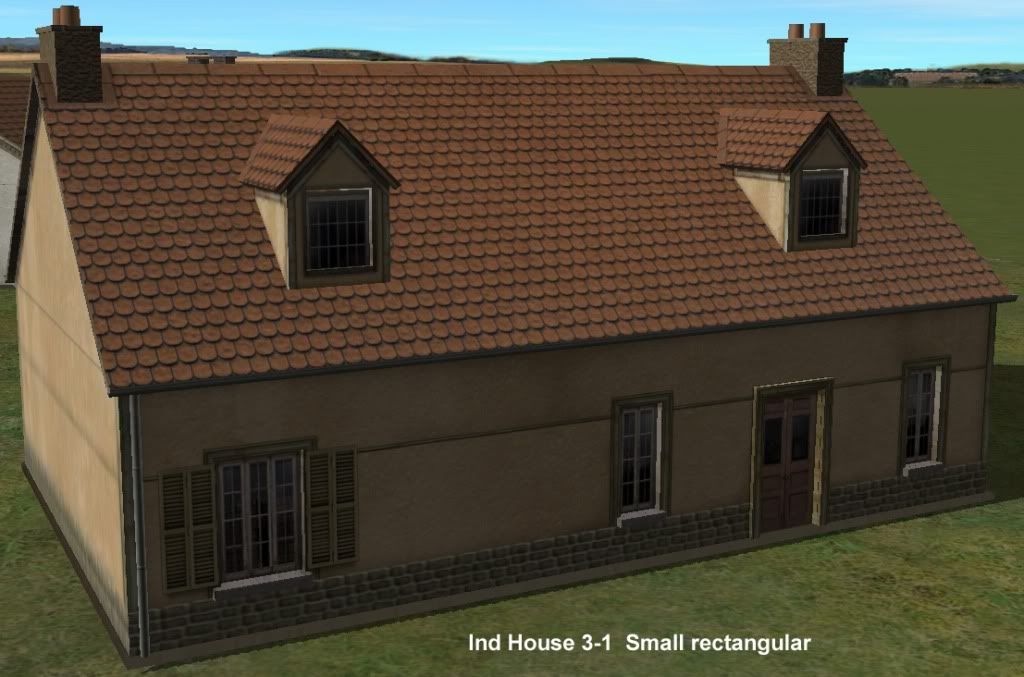
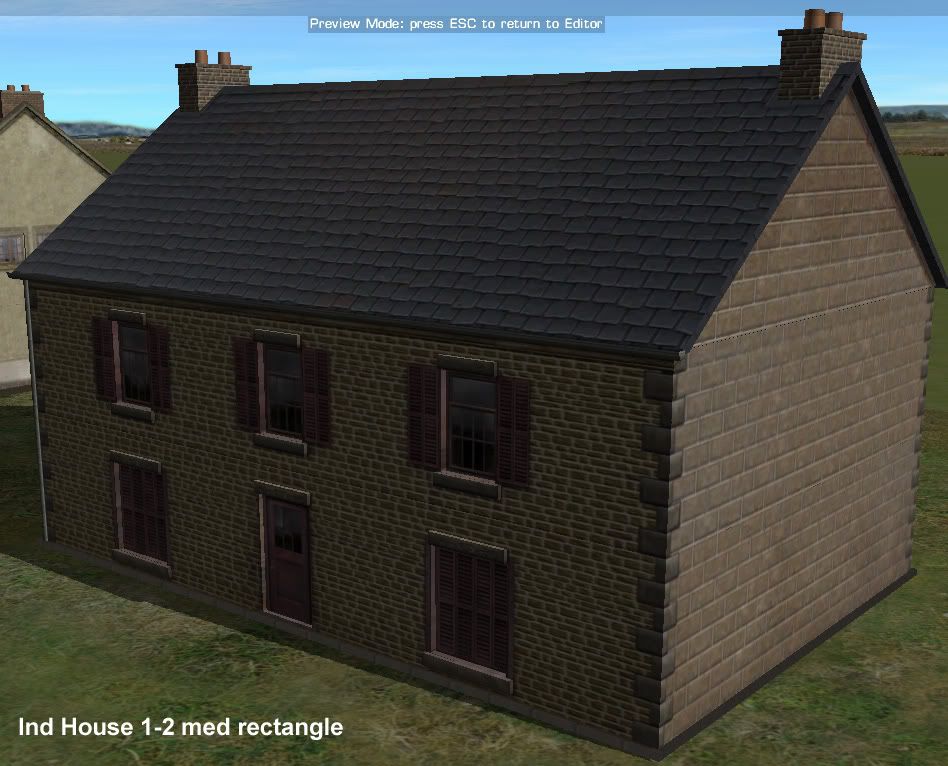



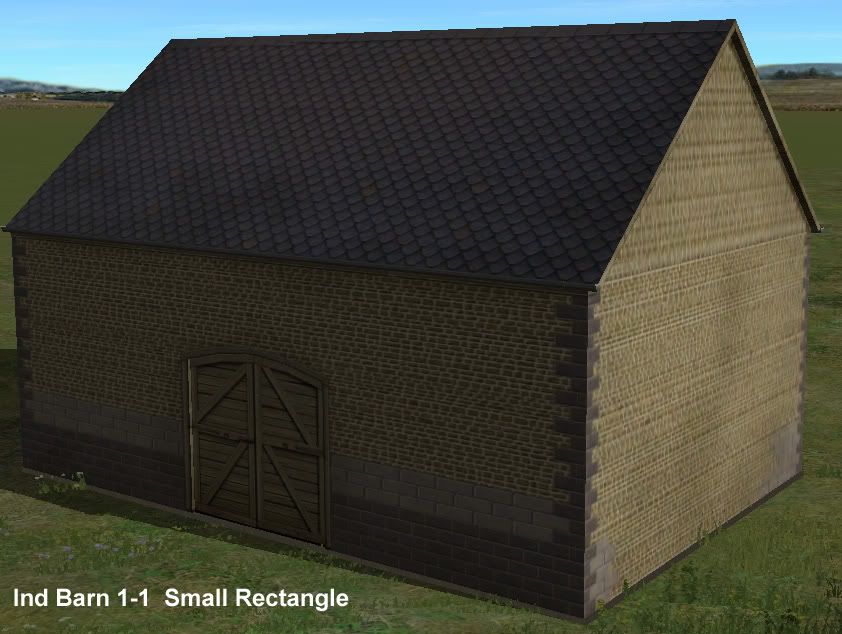
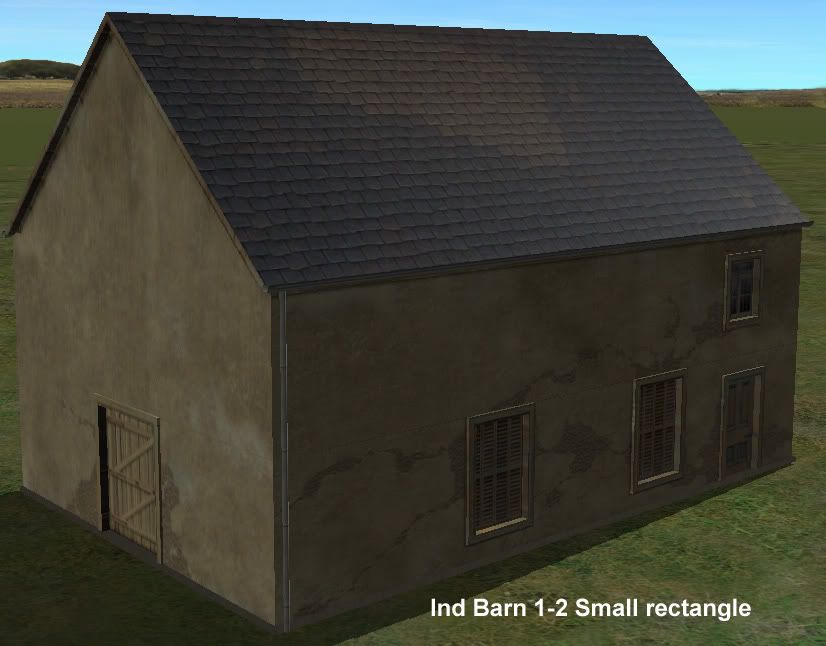

Nonsense.....
in Combat Mission Battle for Normandy
Posted
His fault for living near a beach convenient to midget submarines.
Oh, and whose grass mod are they eating?